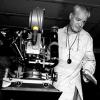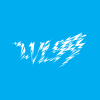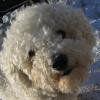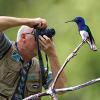-
Posts
382 -
Joined
-
Last visited
Reputation Activity
-
 Frank Jonen reacted to Nana in Affinity Photo Beta (1.5.0 - RC5)
Frank Jonen reacted to Nana in Affinity Photo Beta (1.5.0 - RC5)
Hi Frank,
Since the keyboard shortcut to hide both panels is Shift+Cmd+H, I used Shift+Cmd+Left arrow for the left panel and Shift+Cmd+Right arrow for the right panel. Thought, would share that.
Cheers,
Nana
-
 Frank Jonen reacted to DavidMac in Affinity Photo Beta (1.5.0 - RC5)
Frank Jonen reacted to DavidMac in Affinity Photo Beta (1.5.0 - RC5)
Now this is embarrassing. I can't remember if this is something I set myself or if it is built in. I though it was built in. :unsure:
Anyway the important thing is you have discovered that there is a shortcut that can be set.
-
 Frank Jonen got a reaction from mfarooqi in Affinity Photo Beta (1.5.0 - RC5)
Frank Jonen got a reaction from mfarooqi in Affinity Photo Beta (1.5.0 - RC5)
Now that I looked into shortcuts more thanks to the comments here I found an interim solution to this. I set option+L, option+R to toggle studio left and studio right (the bigass panels) and put in the tools that I don't constantly need. That helps with painting as I still have my floating stuff and only that. Especially useful in full-screen.
It's OK but I still miss being able to collapse stuff.
-
 Frank Jonen reacted to mfarooqi in Affinity Photo Beta (1.5.0 - RC5)
Frank Jonen reacted to mfarooqi in Affinity Photo Beta (1.5.0 - RC5)
Please make panels with flexible widths.. they are fixed .. if i'm working for a 64 x 64 pixel icon.. the navigator always shows a bigger view .. blurry view.. If panel width can be flexible, we can reduce the panel's width to get appropriate preview size.
Also most of the time time .. these panels overlays half of the screen..
6.25% tool bar
21% on left panels..
21% on the right panel..
46% of workable canvas...
it's hard to keep moving panels here and there..
please make all panels "autocollapse able" please please please...
-
 Frank Jonen got a reaction from DavidMac in Affinity Photo Beta (1.5.0 - RC5)
Frank Jonen got a reaction from DavidMac in Affinity Photo Beta (1.5.0 - RC5)
Can you add a little thing still that'd save a lot of time for 1.5?
When painting in a mask layer, temporarily switch to full black (bg) and full white (fg) in the colour picker? Right now it stays colour and you're painting in the mask layer / layer mask with the greyscale equivalent of the foreground colour.
Will test for the 32f white flashing later tonight/tomorrow.
-
 Frank Jonen got a reaction from mfarooqi in Affinity Photo Beta (1.5.0 - RC5)
Frank Jonen got a reaction from mfarooqi in Affinity Photo Beta (1.5.0 - RC5)
32f to 16iBit output bug still present. It's noticeably less but it's still there.
Also tested in easy steps without export.
Flatten layer stack Transform to 16-Bit White breakup happens immediately no output file needed.
What seems to cause it is another 32f layer (cg, placed and rasterised) set to Soft Light (at 80%). Once I disable that, no white breakup.
The layer is masked and with RC5 I now get black dots in 32f mode where the mask tapers off. ONLY in Soft Light. just went through the other blending modes, they seem fine.
-
 Frank Jonen got a reaction from mfarooqi in Affinity Photo Beta (1.5.0 - RC5)
Frank Jonen got a reaction from mfarooqi in Affinity Photo Beta (1.5.0 - RC5)
Can you add a little thing still that'd save a lot of time for 1.5?
When painting in a mask layer, temporarily switch to full black (bg) and full white (fg) in the colour picker? Right now it stays colour and you're painting in the mask layer / layer mask with the greyscale equivalent of the foreground colour.
Will test for the 32f white flashing later tonight/tomorrow.
-
 Frank Jonen got a reaction from hcasmussen in Professional Pre-Press Persona please
Frank Jonen got a reaction from hcasmussen in Professional Pre-Press Persona please
Today I went through Affinity Designer scouring for pre-press tools, there were none. No separations, no channel view. Only the workaround to freeze all layers in Affinity Photo and export each CMYK+ channel separately. Bit of a surprise. But since there's nothing there, here's what I wished were there. That and a decent printing dialogue. For the print simulation, I used to recommend Substance Designer (setup) + Marmoset Toolbag (presentation) for a while now. Not anymore though because I always end up doing the work. -_-
Scope: A new persona for all apps to address basic pre-press that are currently unaddressed.
Views: Toggle between several views for dedicated control options on each task. Some views can be combined to get a better idea about the end result. Noted with [separate] when one stands alone.
Overprint Check View
Show realistic rendering of how the overprint will look based on selected profiles for ink, printer (optional, based on PPD) and paper. Tools: Range Selector: Like a mix of UPoint + drag and move, for fixing and optimising ink trapping (live dilate/erode on vector and bitmaps). Coverage meter: Show where the ink coverage exceeds or meets 100% with a heat map overlay. A range selector then can be used to lower the ink as: lower total, lower c/m/y/k/+. Buttons could be used to control that: e.g.: [c] [m] [y] [k] for working on magenta and yellow at the same time. Output Image: Render the simulation output of a whole document to an image (or PDF for multi-page) Font Trapper: Local overrides on font trappings that didn't turn out as planned in the style and colour settings.
Print Simulation
A simple simulation for base paper types and the ability to create custom ones (folder with absorption values, reflectance and a texture image for example) would be great to give clients a feel for it before someone has to spend money. Tools: Moveable light source: (useful for checking special inks, embossing/debossing, foil stamping and UV coats) Review light: Choose between a set of standard review lights (e.g. Just Normlicht LED proofstation) to judge the print under various lighting conditions and help avoid ambiguous colour situations (like that dress). Output Image: Render the simulation output of a whole document to an image (or PDF for multi-page)
Separation View [separate]
View all separations in a gallery view with an option to overlay them to check whether they can be optimised further or whether they work as planned (how is the yellow faring with the black? Did the overprints turn out as desired in the OC view? Are all special ink channels present correctly?) Tools: Drag overlay: Drag a sheet onto another to see their interaction in the printing context. Print separations: Print dialog allowing output of separations on a standard laser printer. This allows for a final manual check and also is of sufficient quality for a lot of silk screen printers out there. Export to PDF: Save all/active/selected artboards/pages in separations to a multipage PDF ready for lightjet ripping -
 Frank Jonen got a reaction from A_B_C in Professional Pre-Press Persona please
Frank Jonen got a reaction from A_B_C in Professional Pre-Press Persona please
Licensing the Callas code would be a way to do it quick. But really it's a huge job for anyone looking to change things up and make it simpler for the user.
So far the pro level pre-press tools are anything but that. UI design is callous at best.
It could be both, a separate app and a mode inside the apps (so it's always accessible). The apps then just all call the same API to invoke the pre-press app. Like a WebView is an instance of Safari for iOS and macOS apps.
For book content I still prefer pure untagged CMYK, it just truly sucks for images. Maybe because I dealt with the goo in person for a bit and know what the mix looks like when I type in the percentages. Fun times, especially when we poured indigo (not the gummy towel printer) into the black ink to get it shinier and richer.
I looked the Creo tool up. It was called Seps2Comp and had a plate viewer built-in. Hideously expensive still for a student, often regret it, but I learned a bunch from using it.
-
 Frank Jonen got a reaction from lvl99 in Professional Pre-Press Persona please
Frank Jonen got a reaction from lvl99 in Professional Pre-Press Persona please
Today I went through Affinity Designer scouring for pre-press tools, there were none. No separations, no channel view. Only the workaround to freeze all layers in Affinity Photo and export each CMYK+ channel separately. Bit of a surprise. But since there's nothing there, here's what I wished were there. That and a decent printing dialogue. For the print simulation, I used to recommend Substance Designer (setup) + Marmoset Toolbag (presentation) for a while now. Not anymore though because I always end up doing the work. -_-
Scope: A new persona for all apps to address basic pre-press that are currently unaddressed.
Views: Toggle between several views for dedicated control options on each task. Some views can be combined to get a better idea about the end result. Noted with [separate] when one stands alone.
Overprint Check View
Show realistic rendering of how the overprint will look based on selected profiles for ink, printer (optional, based on PPD) and paper. Tools: Range Selector: Like a mix of UPoint + drag and move, for fixing and optimising ink trapping (live dilate/erode on vector and bitmaps). Coverage meter: Show where the ink coverage exceeds or meets 100% with a heat map overlay. A range selector then can be used to lower the ink as: lower total, lower c/m/y/k/+. Buttons could be used to control that: e.g.: [c] [m] [y] [k] for working on magenta and yellow at the same time. Output Image: Render the simulation output of a whole document to an image (or PDF for multi-page) Font Trapper: Local overrides on font trappings that didn't turn out as planned in the style and colour settings.
Print Simulation
A simple simulation for base paper types and the ability to create custom ones (folder with absorption values, reflectance and a texture image for example) would be great to give clients a feel for it before someone has to spend money. Tools: Moveable light source: (useful for checking special inks, embossing/debossing, foil stamping and UV coats) Review light: Choose between a set of standard review lights (e.g. Just Normlicht LED proofstation) to judge the print under various lighting conditions and help avoid ambiguous colour situations (like that dress). Output Image: Render the simulation output of a whole document to an image (or PDF for multi-page)
Separation View [separate]
View all separations in a gallery view with an option to overlay them to check whether they can be optimised further or whether they work as planned (how is the yellow faring with the black? Did the overprints turn out as desired in the OC view? Are all special ink channels present correctly?) Tools: Drag overlay: Drag a sheet onto another to see their interaction in the printing context. Print separations: Print dialog allowing output of separations on a standard laser printer. This allows for a final manual check and also is of sufficient quality for a lot of silk screen printers out there. Export to PDF: Save all/active/selected artboards/pages in separations to a multipage PDF ready for lightjet ripping -
 Frank Jonen got a reaction from cloudbusting in Professional Pre-Press Persona please
Frank Jonen got a reaction from cloudbusting in Professional Pre-Press Persona please
Today I went through Affinity Designer scouring for pre-press tools, there were none. No separations, no channel view. Only the workaround to freeze all layers in Affinity Photo and export each CMYK+ channel separately. Bit of a surprise. But since there's nothing there, here's what I wished were there. That and a decent printing dialogue. For the print simulation, I used to recommend Substance Designer (setup) + Marmoset Toolbag (presentation) for a while now. Not anymore though because I always end up doing the work. -_-
Scope: A new persona for all apps to address basic pre-press that are currently unaddressed.
Views: Toggle between several views for dedicated control options on each task. Some views can be combined to get a better idea about the end result. Noted with [separate] when one stands alone.
Overprint Check View
Show realistic rendering of how the overprint will look based on selected profiles for ink, printer (optional, based on PPD) and paper. Tools: Range Selector: Like a mix of UPoint + drag and move, for fixing and optimising ink trapping (live dilate/erode on vector and bitmaps). Coverage meter: Show where the ink coverage exceeds or meets 100% with a heat map overlay. A range selector then can be used to lower the ink as: lower total, lower c/m/y/k/+. Buttons could be used to control that: e.g.: [c] [m] [y] [k] for working on magenta and yellow at the same time. Output Image: Render the simulation output of a whole document to an image (or PDF for multi-page) Font Trapper: Local overrides on font trappings that didn't turn out as planned in the style and colour settings.
Print Simulation
A simple simulation for base paper types and the ability to create custom ones (folder with absorption values, reflectance and a texture image for example) would be great to give clients a feel for it before someone has to spend money. Tools: Moveable light source: (useful for checking special inks, embossing/debossing, foil stamping and UV coats) Review light: Choose between a set of standard review lights (e.g. Just Normlicht LED proofstation) to judge the print under various lighting conditions and help avoid ambiguous colour situations (like that dress). Output Image: Render the simulation output of a whole document to an image (or PDF for multi-page)
Separation View [separate]
View all separations in a gallery view with an option to overlay them to check whether they can be optimised further or whether they work as planned (how is the yellow faring with the black? Did the overprints turn out as desired in the OC view? Are all special ink channels present correctly?) Tools: Drag overlay: Drag a sheet onto another to see their interaction in the printing context. Print separations: Print dialog allowing output of separations on a standard laser printer. This allows for a final manual check and also is of sufficient quality for a lot of silk screen printers out there. Export to PDF: Save all/active/selected artboards/pages in separations to a multipage PDF ready for lightjet ripping -
 Frank Jonen got a reaction from vonBusing in Professional Pre-Press Persona please
Frank Jonen got a reaction from vonBusing in Professional Pre-Press Persona please
Today I went through Affinity Designer scouring for pre-press tools, there were none. No separations, no channel view. Only the workaround to freeze all layers in Affinity Photo and export each CMYK+ channel separately. Bit of a surprise. But since there's nothing there, here's what I wished were there. That and a decent printing dialogue. For the print simulation, I used to recommend Substance Designer (setup) + Marmoset Toolbag (presentation) for a while now. Not anymore though because I always end up doing the work. -_-
Scope: A new persona for all apps to address basic pre-press that are currently unaddressed.
Views: Toggle between several views for dedicated control options on each task. Some views can be combined to get a better idea about the end result. Noted with [separate] when one stands alone.
Overprint Check View
Show realistic rendering of how the overprint will look based on selected profiles for ink, printer (optional, based on PPD) and paper. Tools: Range Selector: Like a mix of UPoint + drag and move, for fixing and optimising ink trapping (live dilate/erode on vector and bitmaps). Coverage meter: Show where the ink coverage exceeds or meets 100% with a heat map overlay. A range selector then can be used to lower the ink as: lower total, lower c/m/y/k/+. Buttons could be used to control that: e.g.: [c] [m] [y] [k] for working on magenta and yellow at the same time. Output Image: Render the simulation output of a whole document to an image (or PDF for multi-page) Font Trapper: Local overrides on font trappings that didn't turn out as planned in the style and colour settings.
Print Simulation
A simple simulation for base paper types and the ability to create custom ones (folder with absorption values, reflectance and a texture image for example) would be great to give clients a feel for it before someone has to spend money. Tools: Moveable light source: (useful for checking special inks, embossing/debossing, foil stamping and UV coats) Review light: Choose between a set of standard review lights (e.g. Just Normlicht LED proofstation) to judge the print under various lighting conditions and help avoid ambiguous colour situations (like that dress). Output Image: Render the simulation output of a whole document to an image (or PDF for multi-page)
Separation View [separate]
View all separations in a gallery view with an option to overlay them to check whether they can be optimised further or whether they work as planned (how is the yellow faring with the black? Did the overprints turn out as desired in the OC view? Are all special ink channels present correctly?) Tools: Drag overlay: Drag a sheet onto another to see their interaction in the printing context. Print separations: Print dialog allowing output of separations on a standard laser printer. This allows for a final manual check and also is of sufficient quality for a lot of silk screen printers out there. Export to PDF: Save all/active/selected artboards/pages in separations to a multipage PDF ready for lightjet ripping -
 Frank Jonen got a reaction from Krustysimplex in Professional Pre-Press Persona please
Frank Jonen got a reaction from Krustysimplex in Professional Pre-Press Persona please
Today I went through Affinity Designer scouring for pre-press tools, there were none. No separations, no channel view. Only the workaround to freeze all layers in Affinity Photo and export each CMYK+ channel separately. Bit of a surprise. But since there's nothing there, here's what I wished were there. That and a decent printing dialogue. For the print simulation, I used to recommend Substance Designer (setup) + Marmoset Toolbag (presentation) for a while now. Not anymore though because I always end up doing the work. -_-
Scope: A new persona for all apps to address basic pre-press that are currently unaddressed.
Views: Toggle between several views for dedicated control options on each task. Some views can be combined to get a better idea about the end result. Noted with [separate] when one stands alone.
Overprint Check View
Show realistic rendering of how the overprint will look based on selected profiles for ink, printer (optional, based on PPD) and paper. Tools: Range Selector: Like a mix of UPoint + drag and move, for fixing and optimising ink trapping (live dilate/erode on vector and bitmaps). Coverage meter: Show where the ink coverage exceeds or meets 100% with a heat map overlay. A range selector then can be used to lower the ink as: lower total, lower c/m/y/k/+. Buttons could be used to control that: e.g.: [c] [m] [y] [k] for working on magenta and yellow at the same time. Output Image: Render the simulation output of a whole document to an image (or PDF for multi-page) Font Trapper: Local overrides on font trappings that didn't turn out as planned in the style and colour settings.
Print Simulation
A simple simulation for base paper types and the ability to create custom ones (folder with absorption values, reflectance and a texture image for example) would be great to give clients a feel for it before someone has to spend money. Tools: Moveable light source: (useful for checking special inks, embossing/debossing, foil stamping and UV coats) Review light: Choose between a set of standard review lights (e.g. Just Normlicht LED proofstation) to judge the print under various lighting conditions and help avoid ambiguous colour situations (like that dress). Output Image: Render the simulation output of a whole document to an image (or PDF for multi-page)
Separation View [separate]
View all separations in a gallery view with an option to overlay them to check whether they can be optimised further or whether they work as planned (how is the yellow faring with the black? Did the overprints turn out as desired in the OC view? Are all special ink channels present correctly?) Tools: Drag overlay: Drag a sheet onto another to see their interaction in the printing context. Print separations: Print dialog allowing output of separations on a standard laser printer. This allows for a final manual check and also is of sufficient quality for a lot of silk screen printers out there. Export to PDF: Save all/active/selected artboards/pages in separations to a multipage PDF ready for lightjet ripping -
 Frank Jonen got a reaction from A_B_C in Professional Pre-Press Persona please
Frank Jonen got a reaction from A_B_C in Professional Pre-Press Persona please
Today I went through Affinity Designer scouring for pre-press tools, there were none. No separations, no channel view. Only the workaround to freeze all layers in Affinity Photo and export each CMYK+ channel separately. Bit of a surprise. But since there's nothing there, here's what I wished were there. That and a decent printing dialogue. For the print simulation, I used to recommend Substance Designer (setup) + Marmoset Toolbag (presentation) for a while now. Not anymore though because I always end up doing the work. -_-
Scope: A new persona for all apps to address basic pre-press that are currently unaddressed.
Views: Toggle between several views for dedicated control options on each task. Some views can be combined to get a better idea about the end result. Noted with [separate] when one stands alone.
Overprint Check View
Show realistic rendering of how the overprint will look based on selected profiles for ink, printer (optional, based on PPD) and paper. Tools: Range Selector: Like a mix of UPoint + drag and move, for fixing and optimising ink trapping (live dilate/erode on vector and bitmaps). Coverage meter: Show where the ink coverage exceeds or meets 100% with a heat map overlay. A range selector then can be used to lower the ink as: lower total, lower c/m/y/k/+. Buttons could be used to control that: e.g.: [c] [m] [y] [k] for working on magenta and yellow at the same time. Output Image: Render the simulation output of a whole document to an image (or PDF for multi-page) Font Trapper: Local overrides on font trappings that didn't turn out as planned in the style and colour settings.
Print Simulation
A simple simulation for base paper types and the ability to create custom ones (folder with absorption values, reflectance and a texture image for example) would be great to give clients a feel for it before someone has to spend money. Tools: Moveable light source: (useful for checking special inks, embossing/debossing, foil stamping and UV coats) Review light: Choose between a set of standard review lights (e.g. Just Normlicht LED proofstation) to judge the print under various lighting conditions and help avoid ambiguous colour situations (like that dress). Output Image: Render the simulation output of a whole document to an image (or PDF for multi-page)
Separation View [separate]
View all separations in a gallery view with an option to overlay them to check whether they can be optimised further or whether they work as planned (how is the yellow faring with the black? Did the overprints turn out as desired in the OC view? Are all special ink channels present correctly?) Tools: Drag overlay: Drag a sheet onto another to see their interaction in the printing context. Print separations: Print dialog allowing output of separations on a standard laser printer. This allows for a final manual check and also is of sufficient quality for a lot of silk screen printers out there. Export to PDF: Save all/active/selected artboards/pages in separations to a multipage PDF ready for lightjet ripping -
 Frank Jonen reacted to JET_Affinity in Grid Manager improvements
Frank Jonen reacted to JET_Affinity in Grid Manager improvements
When you guys get around to providing the ability to move the ruler origin, please bear in mind how it integrates with the axonometric grids feature.
When you configure a dimetric or trimetric grid and use the keyboard shortcut to toggle between the planes, the intersections of the three planes do not coincide. So, for example:
1. You toggle to the top plane, draw a rectangle, skew and scale it by its transform handles, snapping to the grid to make a 1 x 1 unit square.
2. You toggle to the side plane, and similarly draw a 1 x 1 unit side square. But because the intersections of the side plane grid do not coincide with those of the top grid, you have to draw the side square out of position.
It seems that presently, the Artboard origin serves as the origin of all three grids. When the ability to reposition the origin is added, a user preference should be provided: "Moving Ruler Origin Moves Grid Origin." Also, moving the origin should be made possible without having to mouse all the way to the upper left corner of the window and dragging it to where you are working (as is standard-fare in most programs). When drawing axonometrically, that would be a frequent task and would quickly become irritatingly tedious. Perhaps provide a rightClick menu selection "Set Origin Here", or a dedicated single-key keyboard shortcut to tap when the mouse is down.
Better though, whenever an axonometric option is selected in Grid and Axis manager, simply make the Up axis position and spacing automatically subordinate to the settings of the First and Second axes unless a "custom" option is active.
Frankly, the whole Grid and Axis manager is cumbersome and unintuitive. I would much prefer to see Affinity's Grid and Axis Manager re-vamped to mirror the functionality of DrawPlus. Affinity is supposed to be the "professional" set of applications. DrawPlus's treatment of axonometric drawing grids is more powerful, more intuitive, geometrically correct, and well...just more "professional."
The dimetric preset, by the way, is still in error. Its vertical axis length (spacing) is disproportionately short.
JET
-
 Frank Jonen got a reaction from paolo.limoncelli in Affinity Photo Customer Beta (1.5.0 - RC3)
Frank Jonen got a reaction from paolo.limoncelli in Affinity Photo Customer Beta (1.5.0 - RC3)
Develop Persona
Can we have the White Balance tool write to Overlays too? This is one of the features in Capture One I use constantly to balance mixed light sources.
Right now the (w) tool defaults to the Master adjustment, not the active brush or gradient. Would be nice to not have to do it manually for selections.
-
 Frank Jonen got a reaction from geronimo in Affinity Photo Customer Beta (1.5.0 - RC3)
Frank Jonen got a reaction from geronimo in Affinity Photo Customer Beta (1.5.0 - RC3)
Develop Persona
Can we have the White Balance tool write to Overlays too? This is one of the features in Capture One I use constantly to balance mixed light sources.
Right now the (w) tool defaults to the Master adjustment, not the active brush or gradient. Would be nice to not have to do it manually for selections.
-
 Frank Jonen reacted to jarombra in [AP] Is a Live Rotate tool in the works?
Frank Jonen reacted to jarombra in [AP] Is a Live Rotate tool in the works?
Forgive me for just pointing to Photoshop as the precedent that we all want to (or at least speaking personally, I want to) get unyoked from, but what I'm referring to is how you can just hit 'R' in Photoshop and rotate the canvas any arbitrary amount. Essentially R + LClick does the live rotate, and I hope AP can add this feature as it is essential for painterly illustration work.
-
 Frank Jonen got a reaction from SrPx in Affinity Video Editor?
Frank Jonen got a reaction from SrPx in Affinity Video Editor?
Here are some vector/line animation tools.
Studio Ghibli's Toonz: https://opentoonz.github.io/e/index.html
ToonBoom Harmony: http://www.toonboom.com/products/harmony
Synfig Studio: http://www.synfig.org/cms/
Anime Studio (now Moho): http://my.smithmicro.com/anime-studio-2D-animation-software.html
Pencil2D: https://www.pencil2d.org
For logo animations and animated typography you could just use Apple's Motion. It doesn't do SVG but .ai and .pdf files.
-
 Frank Jonen got a reaction from SrPx in Affinity Video Editor?
Frank Jonen got a reaction from SrPx in Affinity Video Editor?
Maybe because Scratch has a fairly capable editor. It's not exactly rare that ads are edited on it. Just like people edit ads on Smoke. If something works for you, it doesn't matter what it says on the package. When Hiero came out I used that as an editor even and it was just a conform tool. The price it got afterwards chased me away though.
Nuke Studio is free for the non commercial version. That's how you learn the tool so you can join a production where they have a license server. Nuke is not priced for freelancers. Depends on what your product is. If you're doing a VFX heavy ad, Nuke Studio is a great option, plan your time right and rent it for that time +1 month for post delivery changes.
I don't have any experience with HitFilm but a bunch of YouTube narrative shows (not vlogs) are done with HitFilm. Also Sony Vegas. They seem good entry level options.
If you're doing long form, context management and meta data become a big deal. For that stuff FinalCut Pro X + Lumberjack, or Avid are probably the best options for now.
-
 Frank Jonen got a reaction from Patrick Connor in [AP] Is a Live Rotate tool in the works?
Frank Jonen got a reaction from Patrick Connor in [AP] Is a Live Rotate tool in the works?
It's in there but you have to buy an Apple Trackpad. Trackballs aren't supported (yet).
You can step by percentage by setting up a custom key combo. I did that and I keep forgetting it. I'd rather just set up like SHIFT+CMD and rotate the ball/wacom wheel though.
Right now you can do it via the 'view' menu, Rotate left/right/reset.
-
 Frank Jonen reacted to Alfred in Mesh Warp Tool - Lock and Keys
Frank Jonen reacted to Alfred in Mesh Warp Tool - Lock and Keys
+1 for this. BTW, I love your thread title! :D
-
 Frank Jonen got a reaction from Alfred in My first panoramas, finally doable
Frank Jonen got a reaction from Alfred in My first panoramas, finally doable
Spent some time over the weekend to figure out a better way to showcase panoramas. Using parts of PTGui's WebGL viewer and tying it all together with Tumult's Hype and very little custom code. I found PTGui's viewer to be the most true viewer while still having good performance and not messing too much with the picture quality. I got the most control there over how the cyclorama is constructed. Mini map is made as an SVG in Designer and the image of the map is done in Photo. Constant back and forth with the two apps, no hitch no glitch.
Here's a test link if you want to check it out: http://panotest.frankjonen.com
What you can do:
Double tap or tap the double arrows icon on top right to enter full-screen mode, just the pano, nothing else The mini map has finger friendly tap targets to get more info on the respective areas Looking around can be done by turning around while holding your tablet, by swiping with your finger, by dragging your mouse or rotating your trackball around the Y axis.
Disclaimer: It's designed for touch use mainly at this point and to be integrated into desktop websites later as a stand-alone item like an image or a video. I've tested it on iPad (which is the target platform) and desktop. I definitely won't go all out and build in special crutches for every Android device out there, just too many variations to count.
If it works, great if it doesn't ¯\_(ツ)_/¯ — as for iPads: I haven't tested it on the iPad Pro yet. It's designed for recent browsers on Desktop and iOS 9+ on tablets.
It's "hosted" on Dropbox, so download performance won't be like on a real web server. Fonts are stored on cloudfront, which is reasonably fast.
-
 Frank Jonen got a reaction from olcalzavara in My first panoramas, finally doable
Frank Jonen got a reaction from olcalzavara in My first panoramas, finally doable
Going through my first panoramas from 2003 / 2004 from my first dSLR. I screwed up so badly then with overlap, zoom lens nudging (the lens didn't have a proper zoom stopping mechanism, had to hold it tight) that so far every tool I tried made a mess of it. Affinity Photo barely made any mess. One branch didn't match, easy fix. Few smaller ones I had to paint over and the blurry leaves can't be helped but aren't much of a distraction. I'm just glad to finally have a chance to do them without spending days on end.
500px: https://500px.com/photo/182113985
Moving pan: https://www.instagram.com/p/BMkndzDDDnr/
-
 Frank Jonen got a reaction from Aeros4 in My first panoramas, finally doable
Frank Jonen got a reaction from Aeros4 in My first panoramas, finally doable
Going through my first panoramas from 2003 / 2004 from my first dSLR. I screwed up so badly then with overlap, zoom lens nudging (the lens didn't have a proper zoom stopping mechanism, had to hold it tight) that so far every tool I tried made a mess of it. Affinity Photo barely made any mess. One branch didn't match, easy fix. Few smaller ones I had to paint over and the blurry leaves can't be helped but aren't much of a distraction. I'm just glad to finally have a chance to do them without spending days on end.
500px: https://500px.com/photo/182113985
Moving pan: https://www.instagram.com/p/BMkndzDDDnr/




